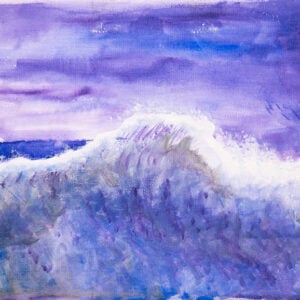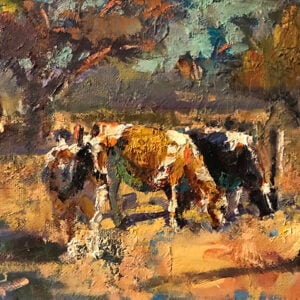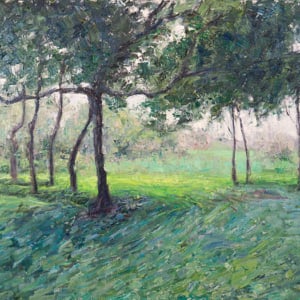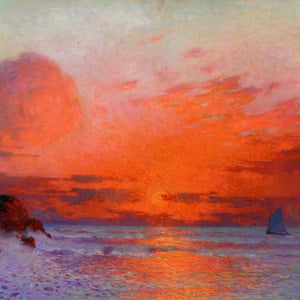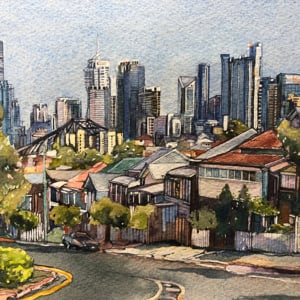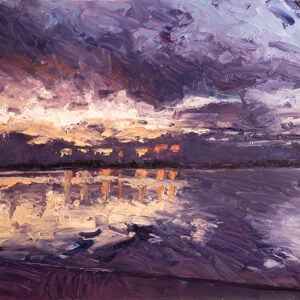For your inspiration today is Isaac Levitan’s Trail in Deciduous Forest, Ferns. This painting is a great lesson on simplification, feature details, and analogous colors.

Dimensions: 10.6 x 15 inches (27 × 39 cm)
Year Created: 1895
Medium: Oil on Canvas
Current Location: Saint Petersburg, State Russian Museum
Click here to download a high-resolution photo of the painting.
Some key observations:
- It’s a simple landscape, with a few intricate details doing most of the work. The background areas are nothing more than a flat stain of green. Details emerge from this vague green background as if it were a dense fog. The most distant trees are basically unfinished. It’s this gradation in detail—from vague in the background to clear and intricate in the foreground—that gives the painting a sense of depth.

- Below is a closeup of Levitan’s more detailed brushwork. He mostly used dabs of broken color to convey the bark, ground, and leaves, plus a few delicate strokes for the plant stems and ferns.

- The painting is restrained in terms of color. It features an analogous, almost monochrome theme of greens. There are a few subtle blues, but they aren’t far from gray. Value contrast does most of the work. Below is a grayscale of the painting. Most of the painting is compressed around the middle of the value range, with a few dark accents and a few light midtones. There are no highlights, which plays into the idea of a dense forest floor, out of reach from direct sunlight. Instead, the dark accents play the leading role. They break the green monotony with bursts of sharp contrast and detail. It’s also interesting that the dominant tree in the center is not dominant in terms of value, but rather size and detail. If this tree were as dark as the ones to the sides, it might throw the balance of the painting (think of a large dark object smack bang in the middle of the painting).

- The path leads our eyes through the painting. It snakes off to the left and then turns back to the right before disappearing behind the trees. That last turn is important—it contains our attention within the painting rather than out of it. The path also appears natural and part of the surrounding landscape. This comes down to two key aspects: 1) The color of the path is distinct in terms of hue (it is more blue and gray) but similar in terms of value, and 2) The path isn’t defined by clean and tidy edges. The edges are broken due to leaves, grass, and plants pushing over onto the path in some areas and the path pushing back in others. This overlap weaves the path and the surrounding landscape together.

- If you look closely, you can see areas of ommitted color, where specs of the bare surface is exposed. This gives the painting a rustic and painterly finish. It also plays into the idea of nature’s vast detail, with the specs of exposed surface suggesting flicking light, textures, and other details. Nicholai Fechin did the same thing in many of his landscapes.

Tip: Omitting color can be quite an effective and efficient techique as it allows you to convey more information with fewer strokes. The risk is that your painting may appear unfinished if you don’t pull it off. A pinch of finesse is needed.
Thanks for Reading!
I appreciate you taking the time to read this post. Feel free to share with friends. If you ever want to learn more, make sure to check out Composition Breakdown.
Happy painting!
Dan Scott

Draw Paint Academy

